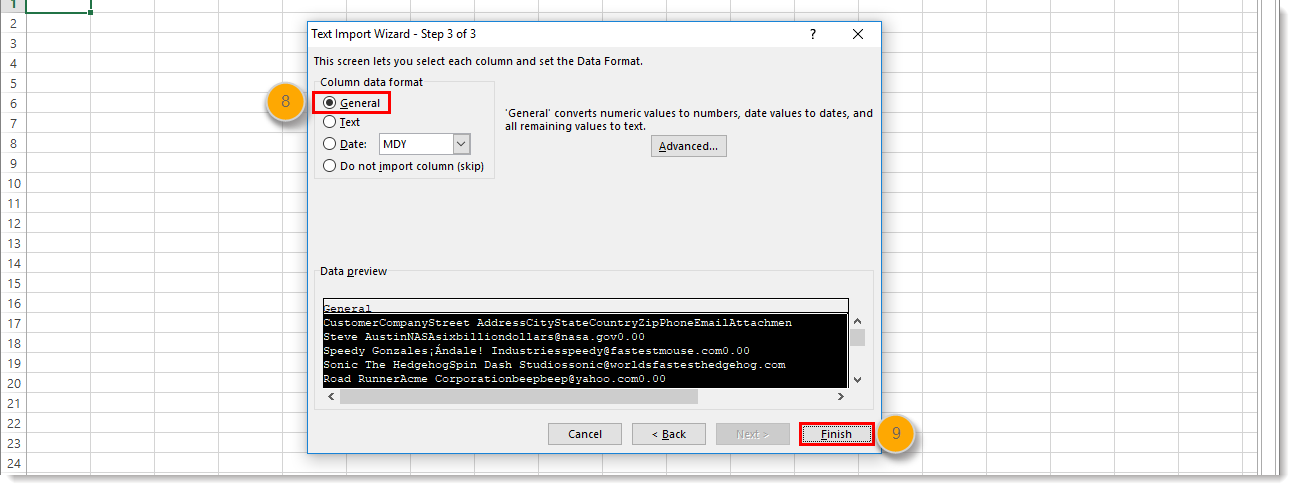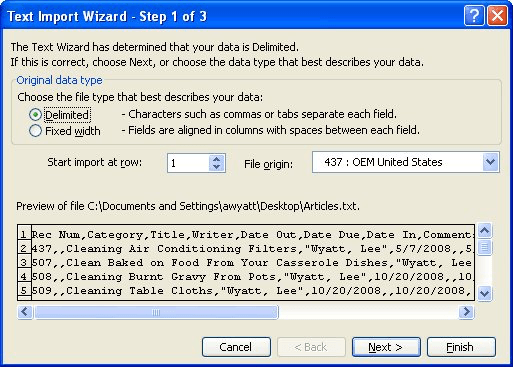
- #Excel text import wizard numbers as text how to#
- #Excel text import wizard numbers as text update#
- #Excel text import wizard numbers as text windows#
#Excel text import wizard numbers as text update#
Will update this post if a solution is found. I secretly suspect this is a registry flag that is being flipped, but was not able to find any workarounds to manage this setting. Group Policy ADMX files do not currently exist to manage this setting and re-enable the old wizard, so your users need to take action to get to the legacy wizard.
#Excel text import wizard numbers as text how to#
The following describes how to use the basic CSV import utility prior to 1704 Oh it’s in a new spot in the interface too, you’re welcome. Activate the worksheet you want to import data to, click the Data tab, and choose From Text button on the Get External Data group. You can import the data of a text file into current worksheet beginning at a specific cell with Text Import Wizard as the following steps: 1.
#Excel text import wizard numbers as text windows#
Personally, my use of Excel is limited to parsing CSV files and reading log files, so I find the concept of pivot tables about as exciting as reading Windows Event Log.īad news is the new wizard replaces the old one, and you will have to do some digging to get this turned back on. Import a text file in worksheet with Text Import Wizard.

Today on the blog the victim is Excel and the recent (maybe not quite that recent – June 2017 version 1704 ) update to O365 that introduced a new ‘Power Query’ wizard. Workaround until the Import wizard is fixed.The ‘tyranny of default’ in the IT realm is a concept where changes are forced upon users by heavy handedly offering new ways of doing things they were able to do before. (Text import used to work ok in older versions of Excel and is still invoked when selecting Data > Text to Columns). In both cases, columns are truncated and data is lost. You'll notice that columns are truncated and not all data is importedĮXAMPLE 1 - Using backslash as a custom delimiter, when I import a file and select the backslash character "\" as a custom delimiter, the imported data is incorrectly truncated to 6 columns.ĮXAMPLE 2 - Using Tab as a delimiter, when I import a file and select "Tab" as the delimiter, the situation is improved, but this time the imported data is incorrectly truncated at 14 columns Choose a delimiter relevant to your data and click LoadĦ. Select File Origin: "1252: Western European (Windows)"ĥ. Browse and select the file to import (use a file with say 20 items per row, separated by your chosen delimiter.

In Excel select the "Data" menu from the ribbonģ.

I'm experiencing issues with Data Import From Text/CSV where the import Wizard is incorrectly truncating columns and not importing all the data. Bug report - Excel version Office 365 ProPlus.


 0 kommentar(er)
0 kommentar(er)
